
Jimena Devastates South-Central Baja
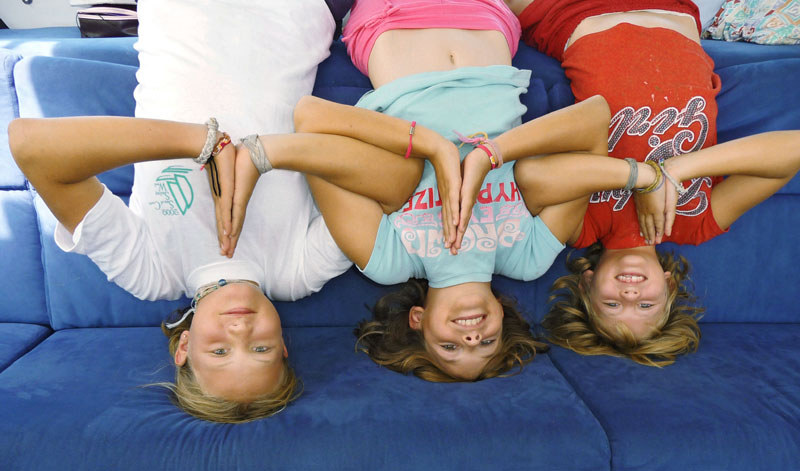
© Latitude 38 Media, LLC
Although detailed reports from all areas are not in, the news about cruisers caught in the wake of hurricane — and later, tropical storm — Jimena seems to be as good as anyone could have hoped. As you may remember from Wednesday’s ‘Lectronic, the once category 4 hurricane unexpectedly veered to the west, sparing Cabo San Lucas and La Paz, the two most populated areas and largest boating centers, from anything over 40 knots of wind and a few inches of rain.
By heading more to the west, the storm, still at nearly full force, slammed into Mag Bay, Bahia Santa Maria and Lopez Mateo, the latter on Baja’s Pacific Coast inland waterway. With almost no natural protection, these places were totally brutalized. The L.A. Times reports that five commercial vessels, including one with over 100 tons of fish, were either damaged or sunk at San Carlos, a port in the northern part of Mag Bay. As the storm moved north, it also destroyed much of the inland towns of Constitucion and Insurgentes.
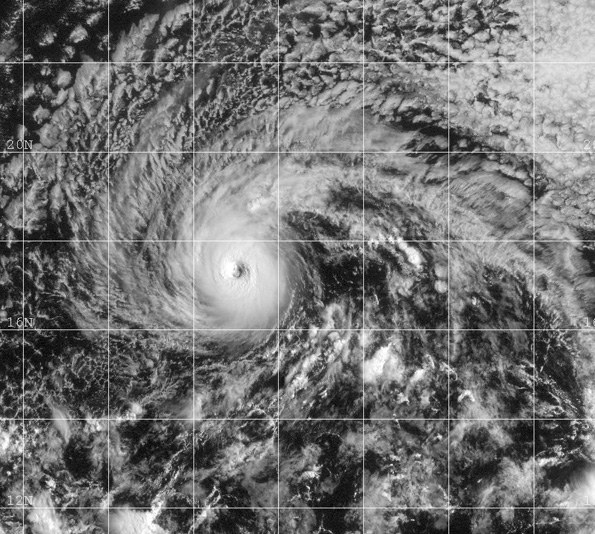
At this time of year, cruising boats tend to congregate on the east coast of the Sea of Cortez at Puerto Escondido, Santa Rosalia, Concepcion Bay/Mulege and Bahia de Los Angeles. And also on the mainland side of the Sea at San Carlos/Guaymas. The danger to all of these locations was rain as much as it was wind, as all lie beneath tall mountains where flash flooding of Biblical proportions is common.
Puerto Escondido: Dave Wallace flew down to Loreto just in time to be with his wife Merry’s Redwood City-based Amel Maramu Air Ops at Puerto Escondido. He reports that the hurricane passed 50 miles to the west, but nonetheless brought sustained winds of 60 knots and a reported gust of 89 knots. Wallace says that five boats broke free but — and this will surprise many — none of the often-criticized Singlar moorings failed. The vessel Saltshaker broke loose, but her skipper, with the help of the crew of a motor vessel, was able to grab another mooring. The sailing vessel Neka chafed through her moorings lines and drifted into the mangroves. Thanks to the Singlar staff, she was put back on a mooring. There are now three boats high and dry on land: Waverly, which broke her own mooring line to a Singlar mooring, and the sailing vessels Wanderlust and Spirit. The latter two were on their own hooks or moorings and have rarely been visited by owners. Cruisers on the scene hope to refloat one or more of these vessels on the next high tide.
"Out in the adjacent ‘Waiting Room’," Wallace continues, "one boat went into the mangroves, and another boat dragged its anchoring system across the bay, but fortunately didn’t hit anything or go ashore. One other boat also broke free and sideswiped the sailboat Joan D III, which was anchored in the Elipse, taking out her stanchions and lifelines on one side. The boat adrift was snagged by the API panga and returned to a mooring in the waiting room." Wallace wants to emphasize that just as was the case when Hurricane Marty came through, no attended boats went ashore. And not one of the Singlar moorings failed.
Concepcion Bay/Mulege: We assume nobody was foolish enough to leave their boats at either of these places. Mulege, which sits at the base of a lake-like plateau in the tall mountains, is always subject to tremendous flash floods, and suffered terrible damage. One elderly man was killed in his room by the flooding.
Santa Rosalia: Perhaps the hardest hit spot on Baja was Santa Rosalia, which has a funky old marina and a new Singlar Marina. According to Toast Conger of the Seattle-based Lagoon 380 Don Quixote, and Alex and Sue Hasenclever of Maitairoa, Santa Rosalia was all but destroyed by flooding, but the 20 or so cruising boats that took shelter all survived in fine shape. The Hasenclevers reported a gust of 90 knots, while Toast says the problem wasn’t so much the strength of the wind, which she reports topped out at about 65 knots, but that the then-tropical storm seemed to park in the immediate vicinity for about seven hours. Thanks to debris at the entrance to the marina, it’s expected that boats won’t be able to leave for a week. One policeman was killed when he was overwhelmed by a wall of water and mud.
Bahia de Los Angeles: We know that prior to the approach of Jimena, the crews of the 20 to 25 boats at the hurricane hole called Don Juan were making extensive coordinated preparations. We’ve heard nothing from them, but believe they were too far north to have suffered an serious effects.
Jimena was a serendipitous hurricane, in that she was initially forecast to track almost straight north. Then she was forecast to make a 90 degree turn to the west at about Turtle Bay. Instead, she headed east, 180 degrees in the opposite direction of the forecast. Then she doubled back to the WSW, fortunately at reduced strength. But she had made it far enough east to drench the boating center of San Carlos/Guaymas on the mainland.
San Carlos/Guaymas: We’re told that Teri Grossman of Marina San Carlos reports that the San Carlos area got moderately strong winds and the most rain ever in recorded history. No boats were lost from the San Carlos Marina, but several anchored-out boats ended up on the beach. The rain so devastated roads that there is currently no access to the huge dry storage area that holds several hundred sailboats. However, it’s been reported that some boats appear to have fallen on their sides or at least against other boats.
As is the case with all hurricanes, there are some stories of odd timing. Take the case of the Conger family of Seattle. While Dean was back in Seattle working, Toast, along with young daughters Jaime, Mera and Aeron, rode the bus from Tijuana to there boat in Santa Rosalia just in time for Jimena. What was it like?
"The girls spent most of the storm in the Singlar marina’s ‘cool room’," writes Toast. "However, the three-story building was like being in an alfalfa sprouter, with water pouring in through the top and then progressively down each wall later. At about 10:30 p.m., the ceiling on the bottom floor where we had the kids resting collapsed, precipitating a move to the ladies’ bathroom. The bathrooms were reinforced with tile due to moisture and sustained no storm damage. The kids were hot, but they were safe. Dulci (the ship’s cat) did not like the hurricane. She particularly hated the cool room where seats and tables made small islands in a one-inch-deep sloshing lake of flood water. She liked the bathroom much better, but was happy when I moved her with me to the boat at 1 a.m. after the storm passed."
In all the reports we received, there were stories of fellow mariners, local officials, Singlar workers, and others who banded together to help folks and boats in need. It was humanity at its finest. For a more detailed report, see the October 1 Latitude 38. If you were on-site, we’d love to get your report and photos.
18-Footers Take Bridge to Bridge
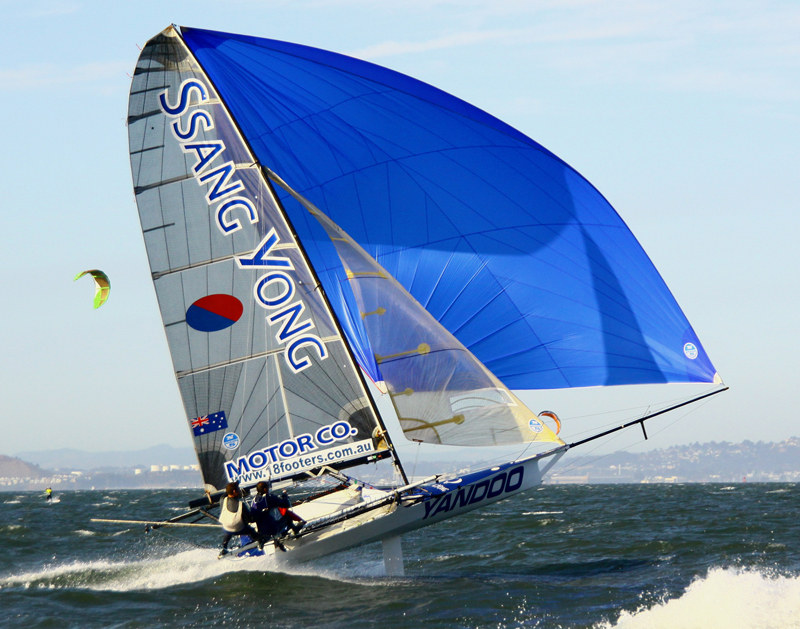
For the second year in a row, an 18-footer won the Ronstan Bridge to Bridge race. John Winning’s Yandoo edged out his son Herman’s Appliances Online by 38 seconds after sailing the 7.5 mile course that starts just outside the Golden Gate Bridge and finishes just off the west side of Yerba Buena Island in 19m, 54s.
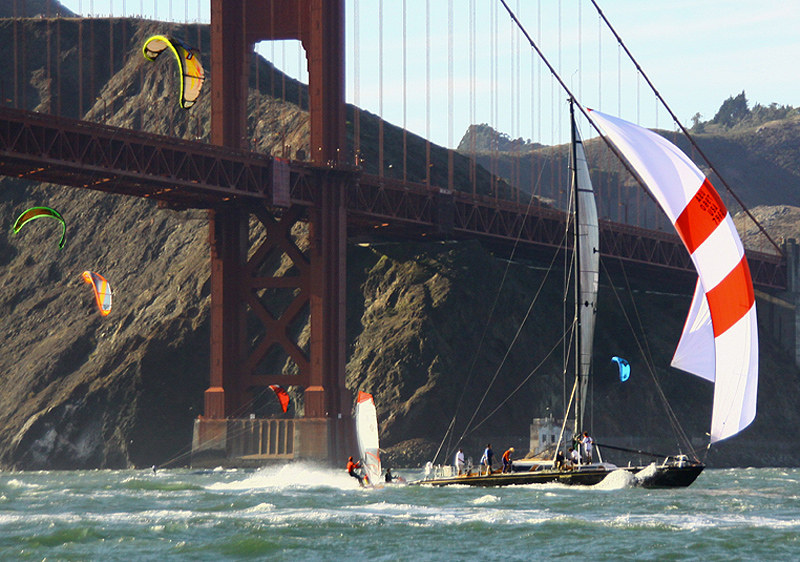
The race was a counter for the 18-footers regatta which wraps up today at St. Francis YC. So not only were the 18-footers racing the kiteboarders, windsurfers and a newcomer to the event — Chris Welsh’s Spencer 65 Ragtime, which finished 16th overall — they were also racing each other in the midst of the 59-strong fleet of boats and boards
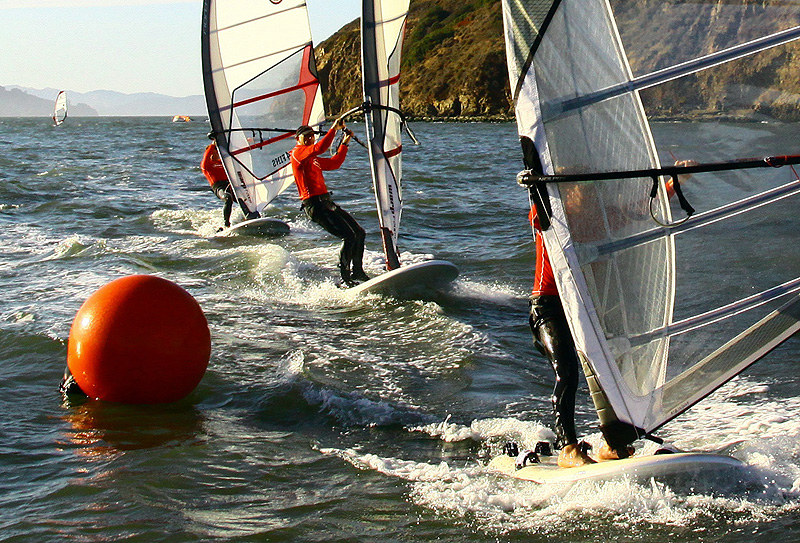
It was a tough one for the kiters — only seven of the 30 starters finished. As the fleet passed Pier 39 and made the turn for the finish, they ran out of breeze. After seeing pressure in the mid-twenties at the start, by the time the sailors reached the finish, the breeze had dropped to about five knots.
Ha-Ha Deadline & Crew List Party
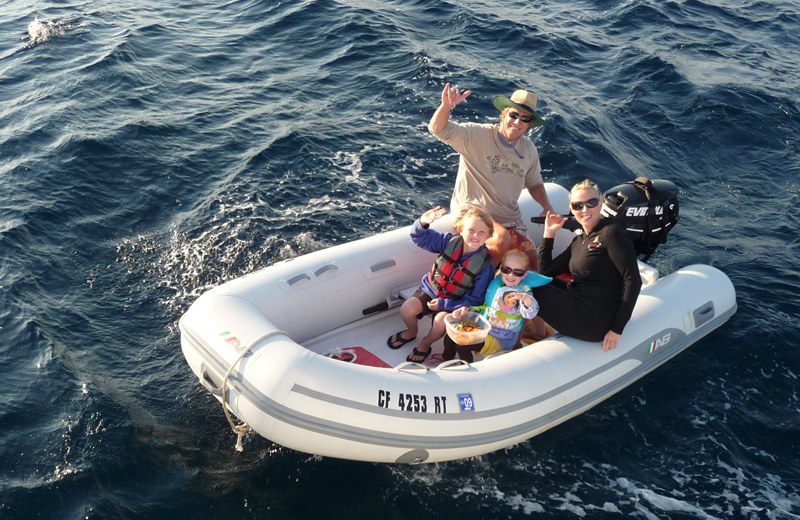
©2009 Latitude 38 Media, LLC
The last time Tom and Nicole Lyon of San Diego did the Baja Ha-Ha, she was four months pregnant. A lot has happened since. Most importantly, the arrival of Max, now 6, and McKenzie, 4. And when we saw them a few months ago in San Diego, they gave us a tour of the new-to-them Gulfstar Sailmaster 47 Ohana. "We are hoping to do the Ha-Ha this fall," Tom said, "but realistically, it’s probably going to be another year." Well, when they came by Profligate in their dinghy yesterday, they had good news: "We’re doing it this year after all!"
If you want to do the Ha-Ha this year, there’s still time to sign up, but be warned that the entry deadline is next Thursday, September 10. With our new online sign-up system you can complete the process in about 15 minutes, any time of the day or night.
If finding appropriate crew has been holding you back, fear not. You can meet dozens of eager, well-qualified watch-standers at next Wednesday’s Mexico Only Crew List and Baja Ha-Ha Reunion at Alameda’s Encinal YC (6-9 p.m.; registered skippers and first mates free, others $7; free snacks and demos; cash bar). And if you’re a sailor in need of a ride south, we suggest you show up early with a smile and a stack of sailing resumes. Who knows, attending next week’s shindig could be the start of a whole new cruising lifestyle!
Forget Driving, Go Sailing!
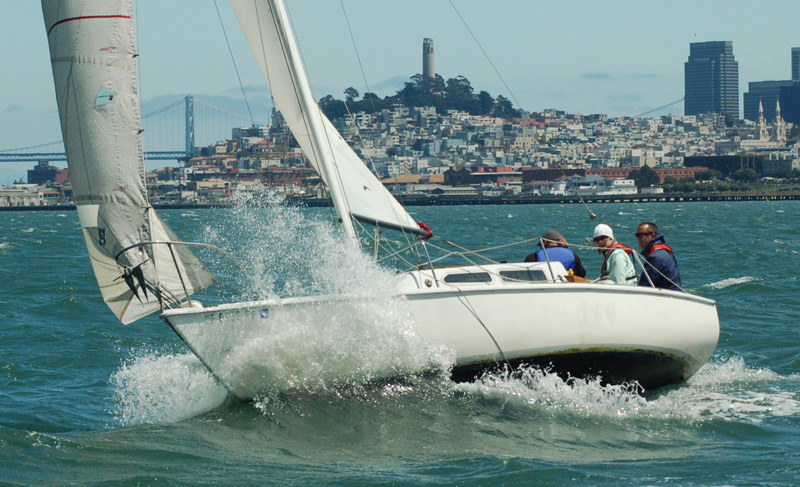
© Latitude 38 Media, LLC
In case you’ve had your head in the sand, let us remind you that we are entering the three-day Labor Day weekend, which is, of course, normally characterized by annoying traffic conjestion all over the Bay Area and beyond. This year, with the Bay Bridge being completely shut down until 5 a.m. Tuesday, the jam-ups are likely to be worse than ever. What to do? Our suggestion is to forget about driving and go sailing! Instead of trekking across three counties to visit grandma, max out the credit card at IKEA or do some wine tasting, why not minimize the stress and elevate the fun-factor by loading up the cooler, shanghaiing a load of friends and getting out on the water.
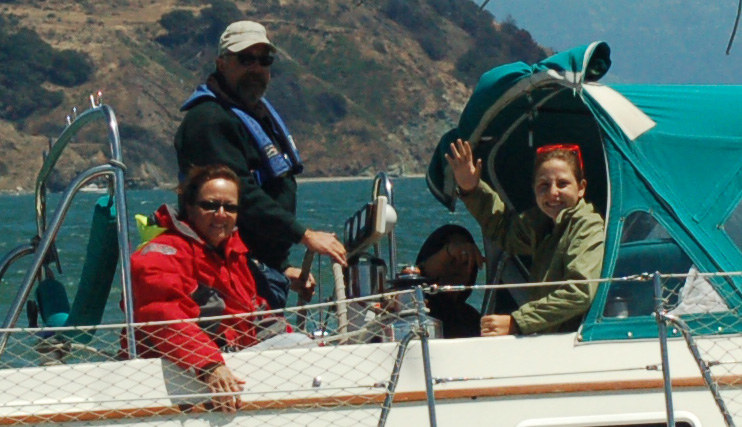
© Latitude 38 Media, LLC
Early indications are that the weather will be excellent this weekend, so why not visit an in-Bay anchorage, dockside restaurant or outside-the-Gate destination that’s long been idling on your must-do list. The sun won’t be setting until about 6:30 p.m., by which time a nearly full moon will be rising to light the way home for those who want to extend their cruising into the evening. We’ll see you out there!
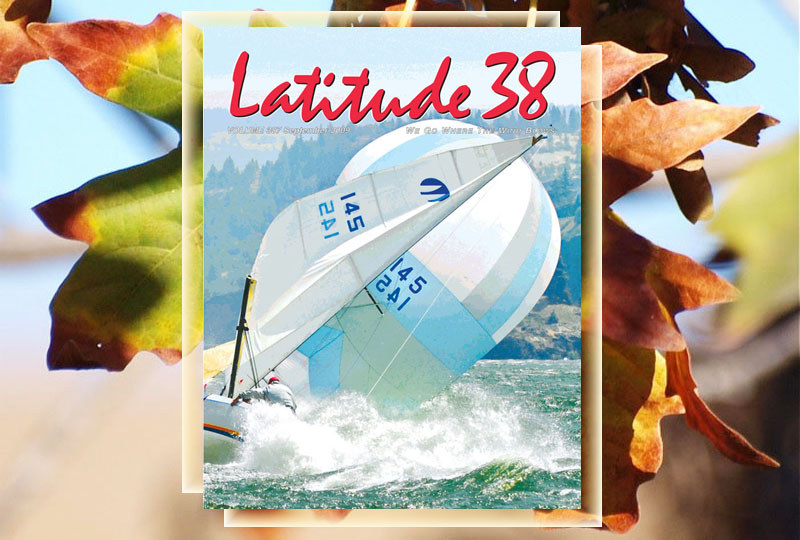
©2009 Latitude 38 Media, LLC
And, of course, for the hours when you can’t be on the water this weekend, be aware that the September edition of Latitude 38 is out on the street, chock full of sailing news from all over the world.
